Nobody wants to see anyone get hurt in real life motorsport crashes, but a nice explosion of carbon fibre, cascading sparks from a blowout or crumpled-in bodywork always looks awesome in a slow-motion replay. Video games know this, and for decades there was an arms race in crash tech as developers strove to deliver the finest, most exquisite crashes.
In the 80s, OutRun flipped its Ferrari as the passengers fell out, in the 90s it was Daytona USA’s barrel rolls and dynamic denting that wowed arcade goers. In the noughties, Burnout just got crashier and crashier. And then, after the peak of 2008’s Burnout Paradise… the arms race stopped. Then, inexplicably, crash damage started to go backwards. Outside of a couple of dedicated crash-centric games and PC-only sims with their ever-inventive mod scenes, across the genre crashes got worse. What gives?
This decline in crash tech has been very gradual but began around 2010. The first case in point was Criterion’s Need For Speed: Hot Pursuit which features crashes that are noticeably less impressive than those of Burnout Paradise two years previous, even though both games were made by Criterion.
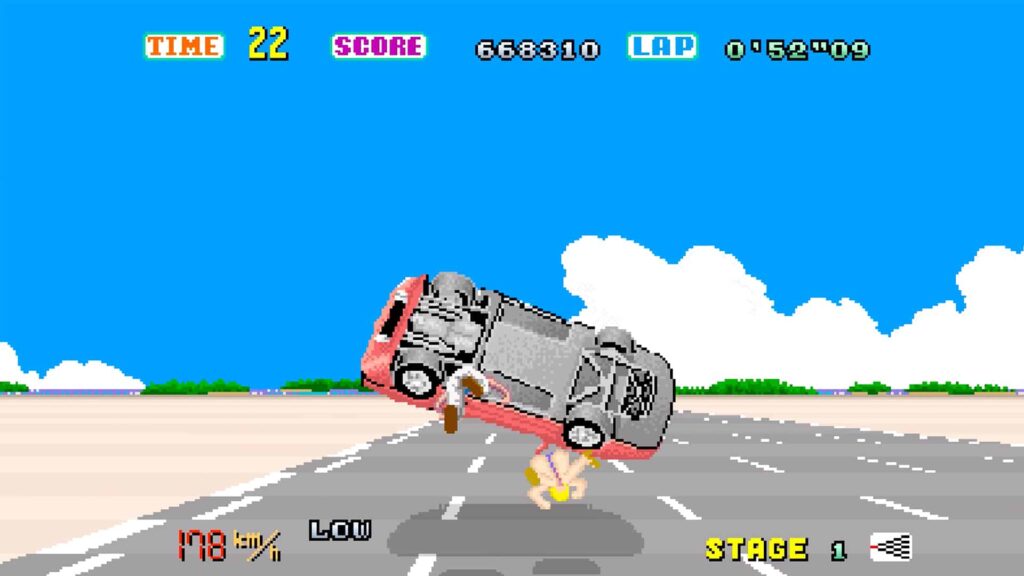
Next, Codemasters’ Formula One series started to downgrade its impacts. After near TV-realistic crashes in 2010, cars became increasingly less likely to flip over, back wings became unbreakable and then the wheels were tethered to the cars. The same happened in Project CARS, which went from catastrophic open-wheeled entanglements launching cars realistically skyward, through to metaphorical bars of soap rubbing against each other in Project CARS 3.
Most recently, Dirt 5 which has otherwise seen a wholesale return to Colin McRae: Dirt 2’s bold, bright, arcade-tinted racing, features demonstrably less impressive crash damage than its 2008 predecessor. You’d think that sims are hampered by licensing issues (which we’ll come back to in a moment) and that it would be easy to point to more arcadey games that deliberately set out to deliver amazing crash damage, but it’s just not the case.
DiRT: Showdown on PS3/360 was all about vehicular chaos, yet the damage was scaled back from other DiRT games that preceded it. Hotshot Racing by Sumo Digital doesn’t even feature damage at all despite unlicensed, flat-shaded generic cars.
The outlier is Wreckfest, which is basically a tech demo for ‘soft body’ deformation effects but I think it just doesn’t feel fun to drive [erm, are you sure Justin? – Ed.], negating the impact of the crashtastic visuals. Speed 3: Grand Prix has given us fully destructible F1-style cars reminiscent of awesome PS2 racer Downforce, but sadly the game itself is of very poor quality. Indeed, the highest fidelity for any crash model is still the 12-years-old Burnout Paradise.
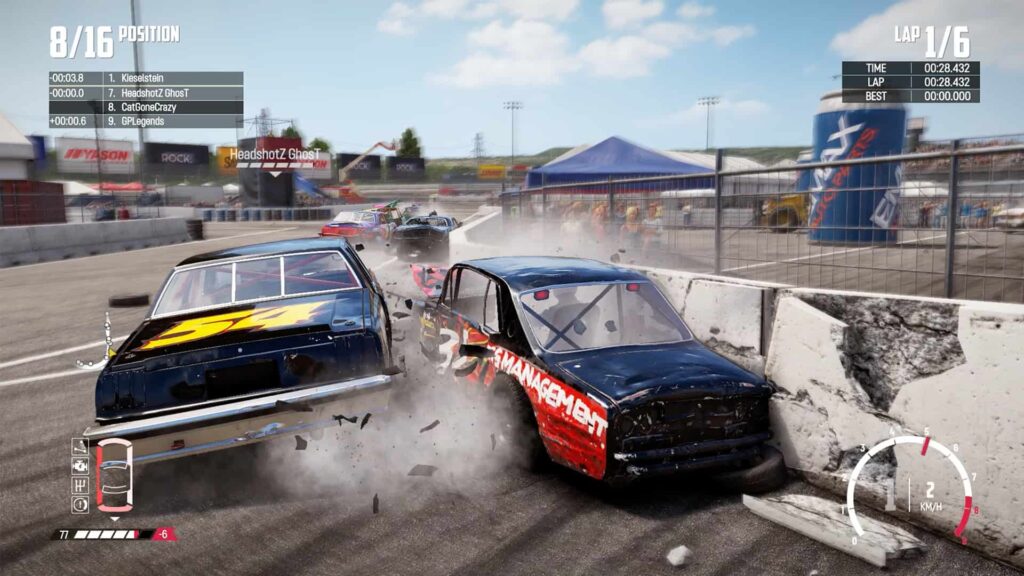
Something must be going on that we don’t know about because it’s not like technology or expertise is getting worse. Time to ask some developers…
Racing game developers tend to dodge the question very well and I’ve asked a lot of them in increasing frustration over the past five years. In case you’ve never asked a game developer a question, let me explain that the vast majority will simply search their brain for the nearest relevant paragraph from their press release and recite that to you, neatly answering a different question altogether, never breaking from the company line. Most, but not all.
The best answer I’ve had comes from Chris Smith, Game Director on 2019’s GRID reboot. I asked him about whether PEGI, or car manufacturers, are making for less damage in games and his answer was both detailed and illuminating:
“Wreckfest destroys its cars with abandon and aplomb. That’s what it does. We’re still motorsport. Number one, it’s what are you trying to do. We want to simulate safe motorsport, even though we’re going a little bit beyond. So really you can’t go hurting the driver, because that changes the PEGI rating, of course. But we also want to be faithful to the manufacturers. We can’t destroy Ferraris, Porsches, Corvettes – all the manufacturers – because their cars don’t do that in real life. They’re actually quite safe. And in real life, drivers do not head 200mph towards a barrier just to see what happens. So we have to represent a limit of what damage would happen in reality.”
He went on to explain that the relationship with licensors has changed over the past 10 years: “But also we have to show respect to the manufacturers. If we start smashing their cars up, you just start driving four wheels and a seat. A: it’s not true to the game we’re making and B: it’s not true to the manufacturers. So, it’s a little PEGI, it’s a little about the manufacturer but it’s also a lot about what game you’re making.
“But we also get to put non-licensed cars in there, which is where we can have a bit more fun. So you’ll see the Daytona car is a fictional car so we smash it up a little bit more. Not beyond – there’s still a limit to where we’ll go. We’re not Wreckfest. I’ve seen Daytona cars fall apart but they’re never down to just a guy on a seat.
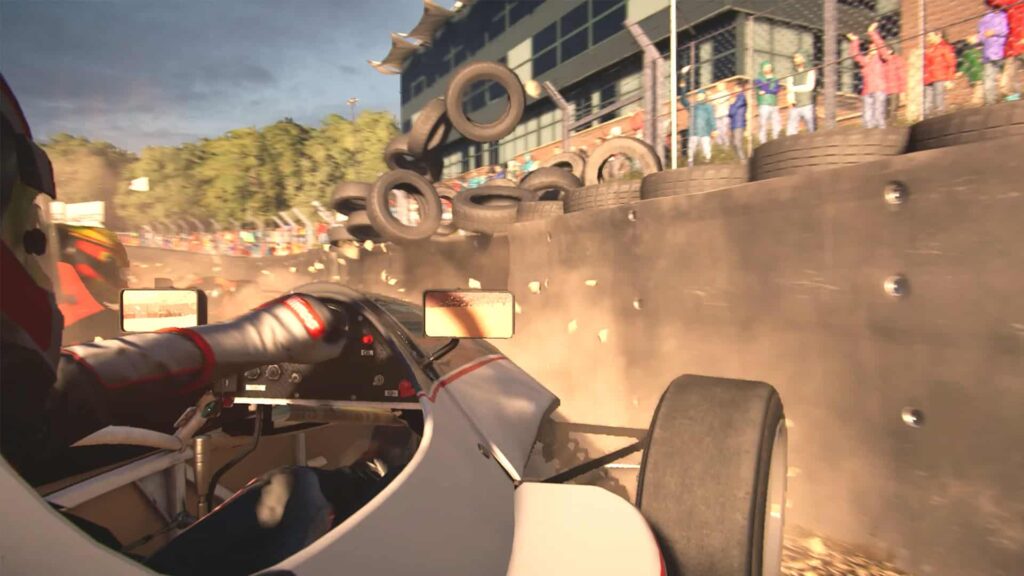
“I think it’s just because people understand the media more. 10 years ago, I don’t think people who licensed this out really understood. Look at Netflix. Netflix was first to say ‘can we have the digital rights to your TV?’ And everyone was like ‘Sure! It’s free money, right? Why not?’ And as the years went past they looked and went ‘Aaah, Netflix – very successful. We should take our digital rights more seriously. How we use them and how we are represented on all formats.’ All companies have to catch up. ‘How many millions of people bought this game? How many millions of people are going to see our Porsche, Ferrari, Toyota, Volvo on the game? How are we being respected? How are we showing our personality as a manufacturer? We don’t mind damage, but are we being represented with an unrealistic model?’
“Don’t get me wrong, it’s not manufacturers going ‘don’t destroy our car’, it’s ‘Well, how are you representing our car and is that realistic?’ Because manufacturers don’t say no to damage, they just say ‘Is it realistic damage? Would our car really do that?’”
While Chris’ answer is refreshingly candid, I do feel the result in modern racers is not realistic. When you look at things like a Mini Cooper denting up its bonnet in GRID Autosport compared to the same in GRID 2019, the former is undoubtedly the more realistic behaviour in a genuine race impact.
Clive Moody, also from Codemasters, who was discussing DiRT 4 at the time, told me: “There is that element of authenticity, yes. Because those sports in real life, they don’t have things to hit that are going to go flying in the air… It’s that more authentic angle coming in. We know from DiRT Rally that people love that authenticity, so it’s no big stretch for us to pull that across into [DiRT 4’s] Land Rush as well.”
That’s the thing that bothers me. If it’s this supposedly hardcore audience demands and expects authenticity, surely they demand realistic crash damage too? Real contact between motorcars is inherently spectacular, even at comparatively low speeds. Witness the damage done when Lewis Hamilton didn’t expect to see Kimi Raikonnen’s car stopped at the pit exit in 2008. It’s this kind of incidental, messy deformation that’s realistic and missing from modern racers.
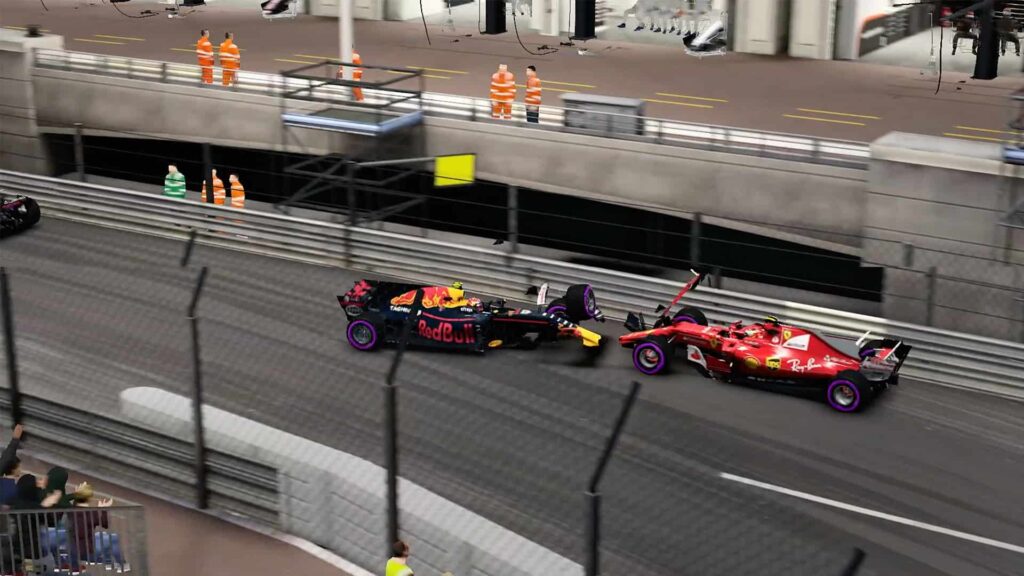
As for the other extreme, I do accept that licensed racers have to draw the line somewhere. Romain Grosjean’s horror crash at Bahrain this year saw the survival cell remain completely intact while the rest of his car was completely destroyed. While I don’t expect crash barriers to deform in the official F1 game, or cars to be ripped in half (and I certainly don’t expect fireballs in a mass-market racing sim), there is something to be said for the ‘survival cell’ remaining intact while the rest of the car receives significant, realistic damage.
If the driver’s cage is programmed to remain uncompromised at all times (pleasing PEGI), the rest should, in theory, be able to receive more damage than just broken wings and tethered wheels. The technology is there, but the willingness is not.
Is there a compromise? I’d like to suggest one. There is one step that can be made without jeopardising licensor relationships or the PEGI rating. I’m talking about the fundamental difference between the aforementioned DiRT 2 and DIRT 5. The same as that between Race Driver GRID and GRID 2019: In the old games, you can rip the corner off your car and be forced to retire. In the new games, the wheels never come off. That just isn’t natural.
Reinstating proper, terminal damage would go a long way towards getting back at least to where we were 10 years ago. Then we can talk about proper crumpling again.
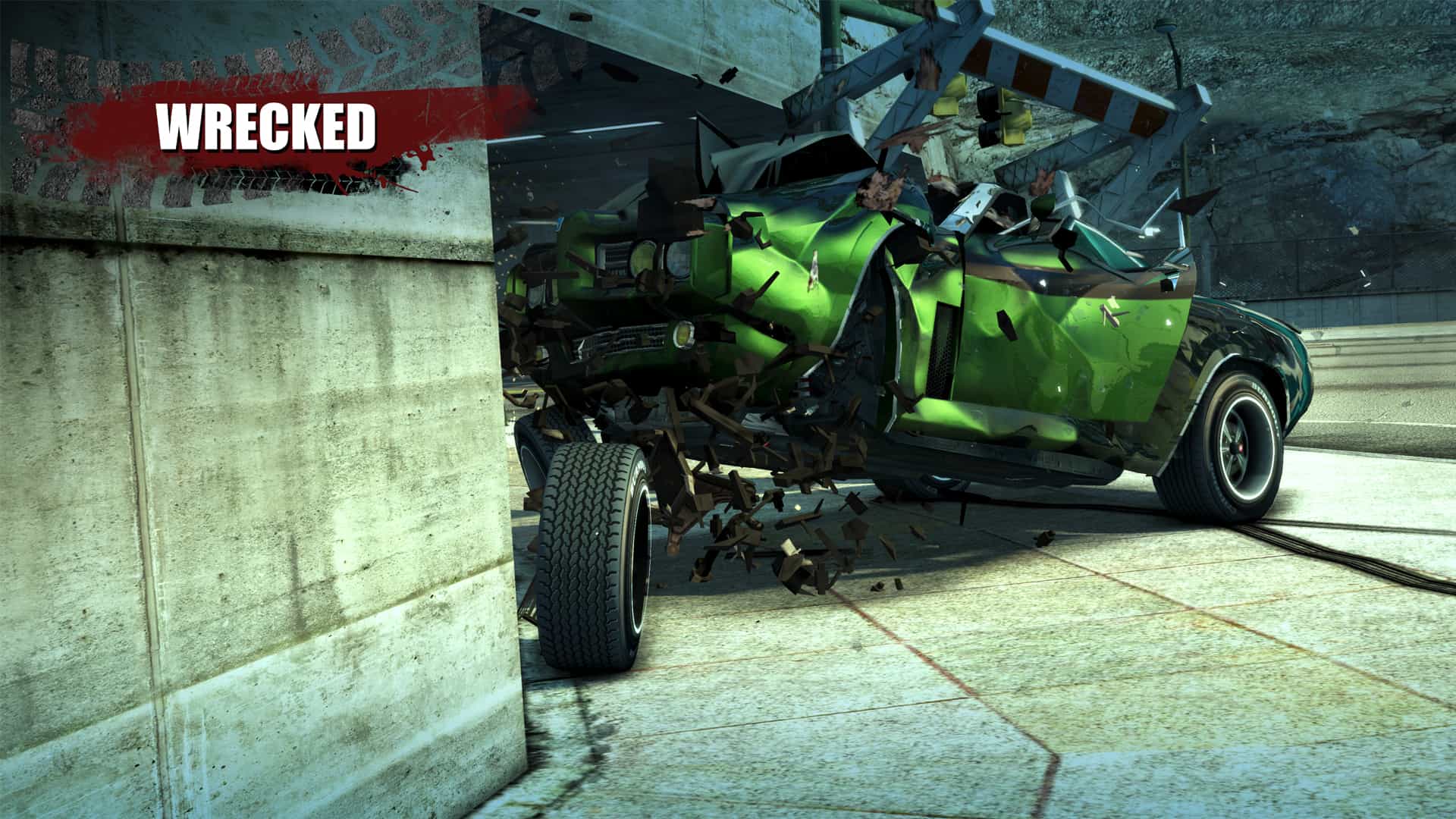




Chat with the Community
Sign Up To CommentIt's completely Free